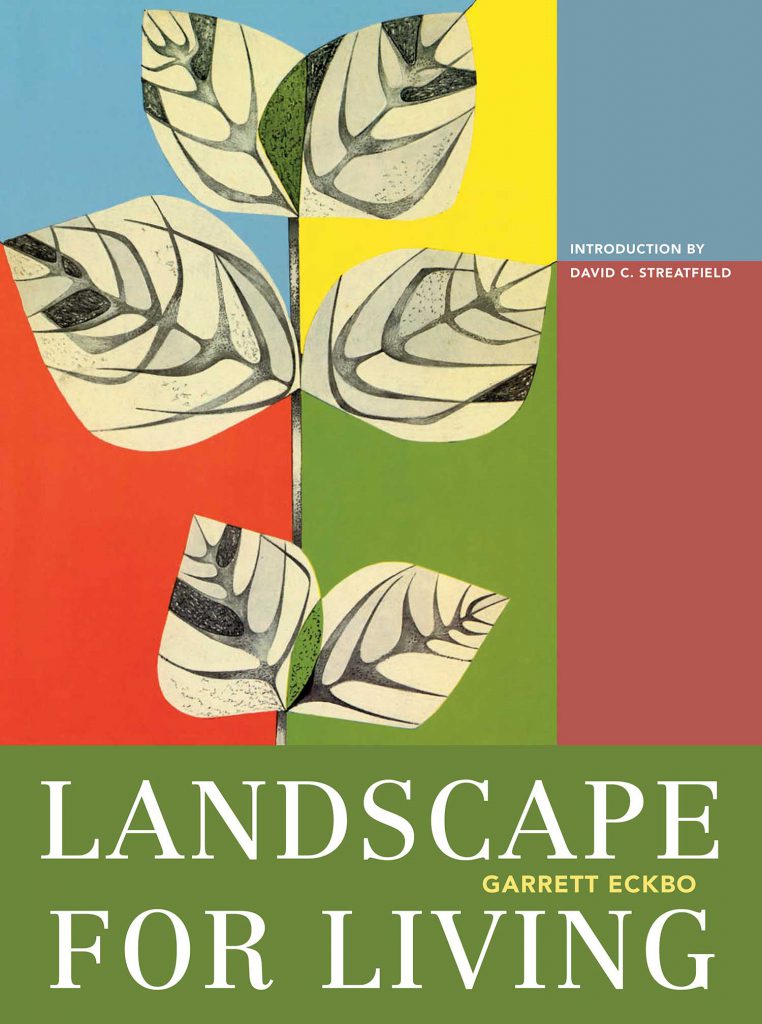Landscape for Living
Garret Eckbo
Reprint of the 1950 edition, with a new introduction by David C. Streatfield
Library of American Landscape History
| ISBN: 978-1-952620-16-4 | 320 pages | 8 x 10.5 inches |
| $40.00 | Cloth | Published: 01/01/2009 |
| 293 b&w photos and drawings | |
A volume in the ASLA Centennial Reprint Series
Published in 1950, Garrett Eckbo’s Landscape for Living presents a synthesis of his thinking and professional work and sets forth his theoretical approach to achieving the “total landscape.” Illustrations throughout the book feature his own designs for gardens, parks, and institutional projects, group housing from his graduate years, work for the Farm Security Administration, and projects by the firm of Eckbo, Royston and Williams. Deliberately experimental, Eckbo’s designs were centered on the garden, which he believed was the prototype for all landscape design. His built work was influenced by modernist European architecture, modern art, and vernacular landscape traditions.
David C. Streatfield’s introduction chronicles Eckbo’s life to 1950, from his lonely childhood through his rebellious years at Harvard and well into his distinguished early career as a landscape designer, prolific author, and committed social activist, interpreting Eckbo’s densely written text as a reflection of this history.
“David Streatfield has contributed both new knowledge and insightful analysis to our appreciation of the 1950 modernist manifesto through which Garrett Eckbo sought to persuade American landscape architects, their clients, and the broader public that a new era—radically transformed by science, technology, and the promise of social change—demanded more than formulaic historic styles and soothing scenery in its designed landscapes. The revolutionary temper and optimism of this classic work seem more than ever timely and inspiring.”
About the Authors
Garrett Eckbo
Garrett Eckbo (1910–1996) was one of the most highly respected and influential American modernist landscape architects. He worked assiduously to overthrow the Beaux-Arts system of landscape design and to develop an approach that would address the social and economic challenges of the modern world. Eckbo rejected the centrality of nature as a psychological and spiritual source of inspiration, criticizing the “palliative” introduction of nature into cities in parks designed by Olmsted and other nineteenth-century landscape architects and arguing instead for a scientific method that would provide a model for a new approach to landscape design entirely free of preconceptions. His built work was influenced by modernist European architecture, modern art, and vernacular landscape tradition. As a principal of Eckbo, Royston & Williams, he helped introduce socially responsible as well as sustainable design practices to Southern California, gradually expanding his practice to form EDAW, one of the largest and most influential corporate firms in the world.
David C. Streatfield
David C. Streatfield, professor emeritus of landscape architecture at the University of Washington, is author of California Gardens: Creating a New Eden and numerous essays.
